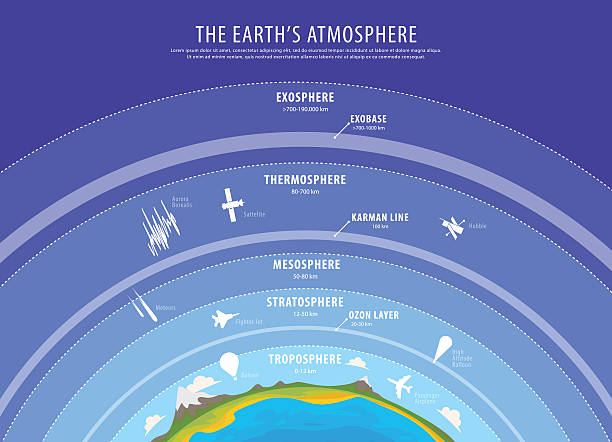Using the Earth’s Atmosphere as an Analogy for Well-being
As the blooms of spring arrive and Earth Day approaches, it reminds us of our collective responsibility towards this beautiful planet. It’s also an opportune moment to reflect on the parallels between the Earth’s nurturing atmosphere and our own well-being. Just as the Earth transitions from the dormancy of winter to the rebirth of spring, it serves as a powerful metaphor for personal growth and renewal.
This month we invite you to consider a novel way of looking at your own well-being – as if you are the earth and your well-being practices are your atmosphere. Much like the Earth’s atmosphere protects and sustains life on our planet, so do our well-being practices sustain ourselves as we journey through the ups and downs and and the ever-changingness of life.
The Layers of the Atmosphere and Layers of Well-being
The Earth’s atmosphere, a complex and dynamic system that envelops our planet, is essential for sustaining life. It provides us with the air we breathe, protects us from the harsh radiation of the sun, and plays a crucial role in the climate and water cycle. Similarly, our well-being is a multifaceted and delicate balance that sustains and nurtures our mental, physical, emotional, and spiritual health. By drawing an analogy between the Earth’s atmosphere and our well-being, we can gain insights into how to better care for ourselves and the planet.
The atmosphere is divided into five main layers: the troposphere, stratosphere, mesosphere, thermosphere, and exosphere. Each layer has distinct characteristics and plays a specific role in the overall functioning of the atmosphere.
1. Troposphere – Foundation of Living:
Just as the troposphere is the lowest layer of the atmosphere where all weather conditions take place and where we live and breathe, the foundation of our well-being is built upon our basic needs being met. This includes physical health, safety, and stability. Without a stable foundation, akin to a stable troposphere, it’s challenging to thrive. This extends to where we choose to place our energy in life, and the food we choose to fuel ourselves. Be intentional.
2. Stratosphere – Protection and Ozone Layer:
The stratosphere contains the ozone layer, which protects life on Earth from harmful ultraviolet (UV) rays. In the context of well-being, this can be likened to the protective measures we take to safeguard our physical and mental health, such as consistent physical movement, setting boundaries, practicing self-care, and seeking support when needed. Developing meaningful, long-lasting relationships (linked as one of crucial pieces of happiness) also function as a protection to the stressors and challenges of life. Invest in them.
3. Mesosphere – Meteor Shield:
The mesosphere protects the Earth by burning up meteors before they can reach the surface. Similarly, resilience acts as our mesosphere, protecting us from the burnout caused by life’s challenges. Developing resilience through challenges, support, and personal growth helps us manage stress and bounce back from adversity. As does investing in practices to build resistance to stress, like mindfulness, yoga, and even mind-body disciplines like Pilates. Lean into your own resilience.
4. Thermosphere – Communication Layer:
The thermosphere, with its ionosphere layer, is crucial for communication over long distances, reflecting radio waves back to Earth. This mirrors the importance of social well-being and communication in our lives. Healthy relationships and effective communication are vital for emotional support and understanding, akin to the signals bouncing through the thermosphere.
5. Exosphere – Boundary of Influence:
The exosphere is the outermost layer, gradually fading into space. It represents the boundary of the Earth’s influence. In personal well-being, this can be seen as recognizing the limits of our control and influence. Understanding what we can and cannot control helps reduce anxiety and fosters peace of mind. We cannot control the pace at which the Earth and our lives change. That said, we can make peace with the changes, seeing them as an opportunity for personal growth or to lean into love amidst the chaos.
Climate Change and Emotional Well-being
Just as changes to our climate disrupt the delicate balance of the Earth’s atmosphere, neglecting aspects of our well-being can lead to imbalances that affect our quality of life. Environmental stresses such as pollution, deforestation, and global warming can be likened to the stressors we face in our daily lives — overwork, toxic relationships, and neglect of our physical health. Just as we need to take action to mitigate climate change through sustainable practices, we need to adopt healthy habits and routines to maintain our well-being.
The Importance of a Healthy Atmosphere and Well-being
A healthy atmosphere is critical for the survival of countless species on Earth, including humans. Similarly, a well-balanced approach to our well-being is essential for leading a fulfilling and healthy life. By understanding the analogy between the Earth’s atmosphere and our well-being, we are reminded of the interconnectedness of our health and the planet’s health. Just as we must take steps to protect and preserve the Earth’s atmosphere, we must also take care of our mental, physical, and emotional well-being.
We hope you will take this analogy with you as a useful tool in your daily lives. Sometimes reframing the way you’re approaching something as multi-faceted as wellness can illuminate the “why” behind what we do. We invite you to think about strengthening your own atmosphere in terms of layering in lasting well-being practices.
With Loving-Kindness,
Chris


